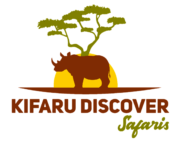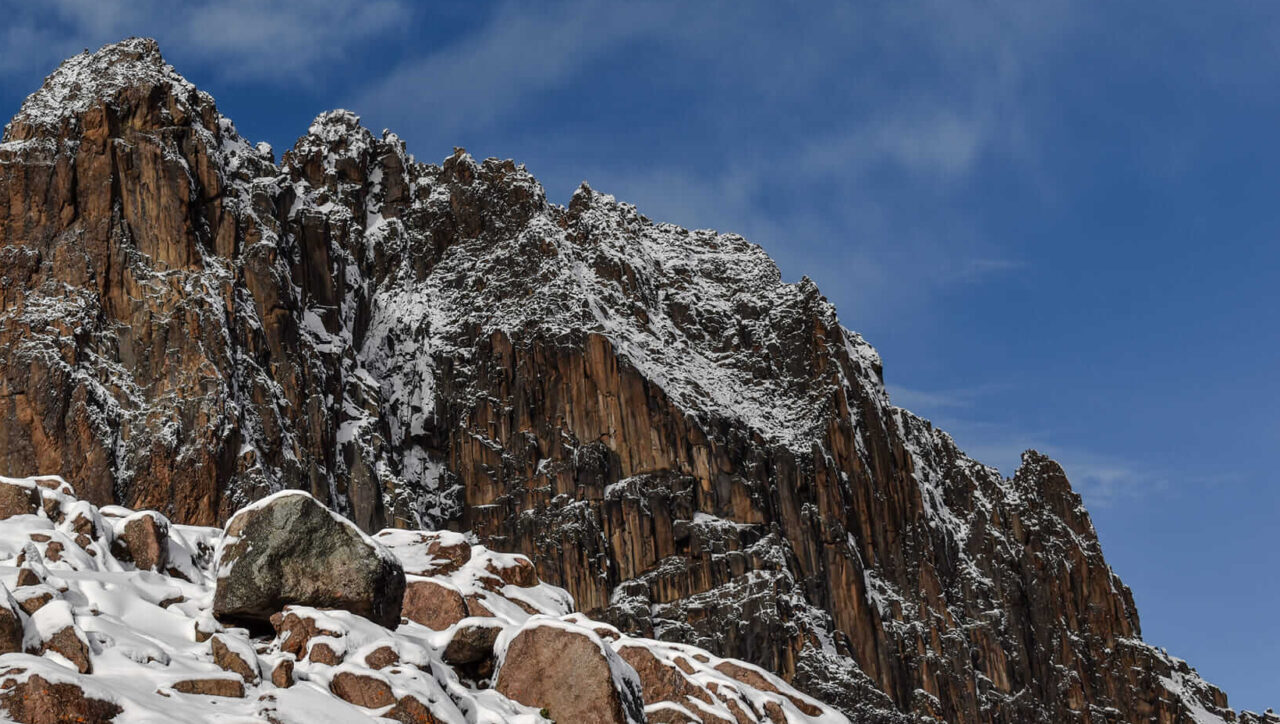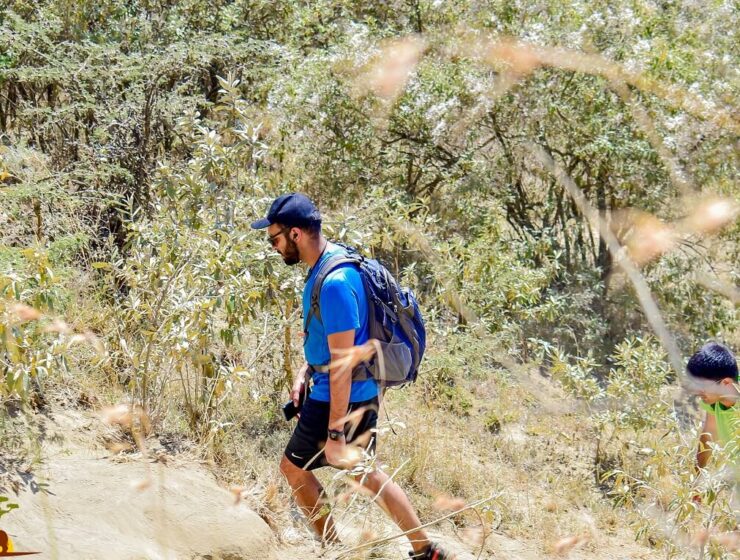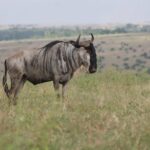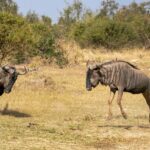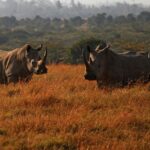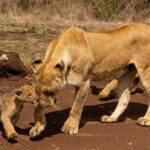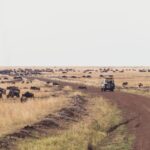Kenya is famous for its beautiful landscapes and amazing wildlife. It also has some great mountains to climb for those who love adventure and nature. This guide will take you through mountain climbing in Kenya and the top mountains in Kenya, including Mount Kenya, Mount Satima, Mount Kinangop, Mount Elgon, Mount Longonot, and how to prepare for your climb.
Mountain Climbing in Kenya
This guide will take you through mountain climbing in Kenya and some of the top and highest mountains in Kenya which include Mount Kenya, Mount Elgon, Ol Doinyo Lesatima
1. Mount Kenya: Tallest Mountain in Kenya
Mount Kenya is the second highest mountain in Africa, standing tall at 5,199 meters (17,057 feet) and the tallest in Kenya. It is located in central Kenya and is a UNESCO World Heritage Site.
It is a very popular mountain climbing destination in Kenya with a good number of people taking expeditions to one of its peaks (Point Lenana) and fewer others trying to challenge the vertical climb to Batian peak the highest peak.
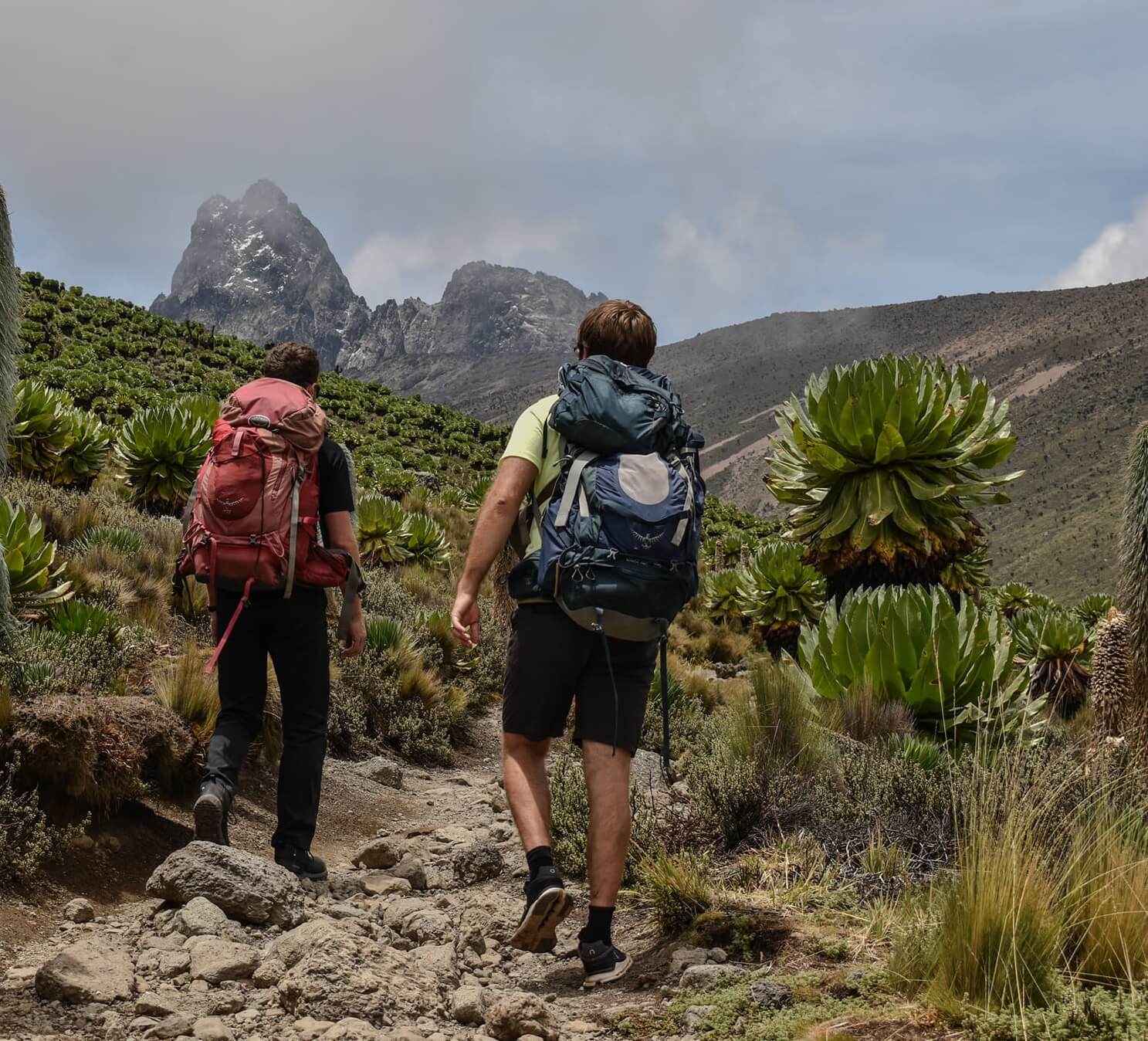
Mount Kenya has several peaks, with Batian and Nelion being the highest and hardest to climb and Point Lenana being relatively easier to climb with no ropes required.
Routes
- Sirimon Route: This route is popular because it is not too steep and has beautiful views of the Northern moorlands. With a 4 days climbing expedition on this route you can get to Point Lenana. Check out this Mount Kenya 4 Days Climbing Expedition Sirimon Route. The Mount Kenya hike price for a 4 days expedition is 750 USD all inclusive.
- Chogoria Route: Known for its scenic beauty, this route takes you through forests, lakes, waterfalls, caves, and gorges. You can visit lake Ellis, Nithi Waterfalls and other other attractions.
- Naro Moru Route: The fastest but steepest route, often used by experienced climbers who want to reach the top quickly.
Tips for Climbing Mount Kenya
- Take time to get used to the high altitude to avoid sickness.
- Hire a local guide to help with navigation and safety. It is a requirement by KWS to have a local guide when climbing this mountain. At Kifaru Discover Safaris, we have very good local guides at Mount Kenya.
- Pack warm clothes and waterproof gear because the weather can change quickly.
To climb Mount Kenya on a slower pace and enjoy more attractions, you can check out this 6 Days Mount Kenya Mount Kenya climbing expedition from Sirimon route to Chogoria route.
At Kifaru Discover Safaris we have some of the best climbing Mt Kenya packages and you can contact us for custom packages.
2. Ol Donyo Lesatima (Mount Satima)- Aberdare Range
Ol Donyo Lesatima, often simply called Lesatima or Mount Satima, is located in the Aberdare National Park in central Kenya. It is the third highest peak in Kenya at 4001 metres after Mount Kenya and Mt Elgon.

Ol Donyo Lesatima is a Maasai word which means the ‘mountain of the bull calf’. Lesatima is a common mountain climbing in Kenya destination and is usually done in preparation for climbing Mt. Kenya.
The Aberdare Range is renowned for its dense forests, stunning waterfalls, and abundant wildlife. Climbing Lesatima provides an opportunity to explore these lush landscapes and enjoy the tranquility of the highlands.
Here is the main route for climbing Mount Lesatima.
- Starting Point: The primary route to Ol Doinyo Lesatima begins at the Aberdare National Park’s Northern Moorlands gate (Shamata Gate). It can also be accessed through the Nyeri Side on Wandare Gate or Mweiga Gate or Rhino Gate (near Tafaria Castle). Through the Shamata Gate one has to pass the Dragon Teeth then reach Mount Satima.
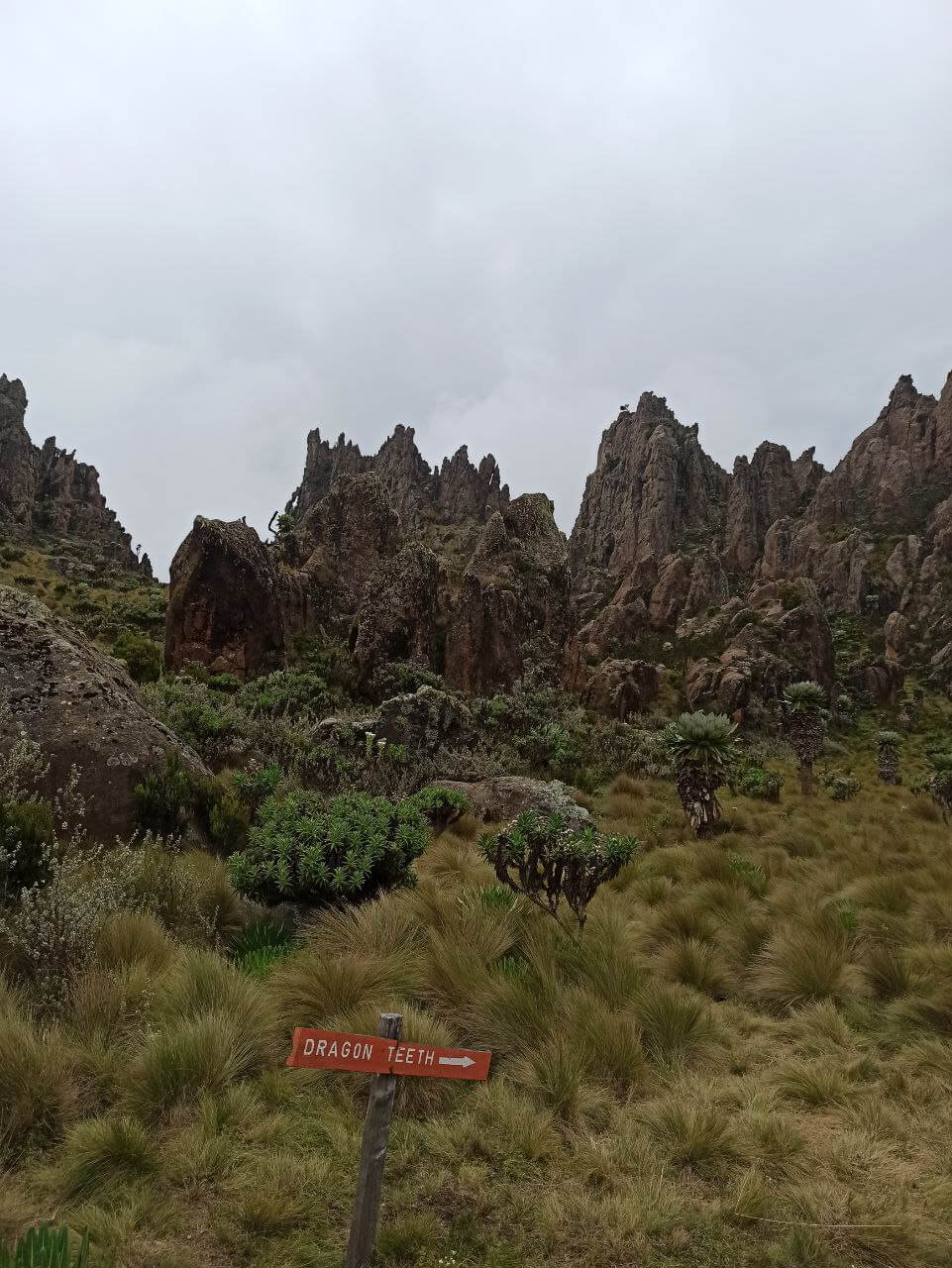
- Trail: The trail is fairly well-marked and winds through montane forests, bamboo zones, and open moorlands. As you ascend, the vegetation changes, offering diverse scenery and a chance to see various wildlife species.
- Summit: The final ascent to the summit involves a steep climb over rocky terrain. Once at the top, climbers are rewarded with panoramic views of the Aberdare Range, the Great Rift Valley, and on clear days, even Mount Kenya.
Why climb Mount Satima
- Diverse Ecosystems: The climb takes you through different ecosystems, from lush forests teeming with wildlife to alpine moorlands with unique flora.
- Wildlife: The Aberdare National Park is home to elephants, buffaloes, leopards, antelopes, and numerous bird species. Climbers often spot wildlife along the trail.
- Scenic Beauty: The Aberdare Range is known for its scenic beauty, including waterfalls, deep valleys, and rolling moorlands.
- Towering Peak and Moorlands: Lesatima’s summit is characterized by its rugged terrain and expansive moorlands. The peak stands out against the surrounding landscape, offering a striking contrast to the lower forested areas.
- Cultural Significance: The Aberdare Range holds cultural importance for the Kikuyu people, who regard it as one of their traditional homes. Exploring this area offers insights into the local culture and traditions.
Best Time to Climb to Climb Ol Donyo Lesatima
The best time to climb Ol Doinyo Lesatima is during the dry seasons, from January to March and July to October. During these periods, there is less rain, the weather is more stable, and the trails are less muddy.
During the rainy season the trail is very slippery and difficult to climb.
Permits and Guides
Climbers need to obtain park entry permits from the Kenya Wildlife Service (KWS) to access Aberdare National Park. Hiring a local guide is recommended for safety, navigation, and gaining deeper insights into the area’s natural and cultural heritage. At Kifaru Discover Safaris we have very good guides for Mount Satima who understand the mountain well.
Gear and Preparation
- Footwear: Sturdy hiking boots with good ankle support
- Clothing: Layered clothing for varying temperatures, waterproof jacket, and warm gear for higher altitudes
- Essentials: Backpack, water, snacks, sun protection (hat, sunglasses, sunscreen), first aid kit, and navigation tools (map, compass, GPS)
- It is highly recommended to do preparation hikes before going to Lesatima. You can start with Mount Longonot hike then Mount Kinangop then proceed to Lesatima.
Safety Tips
- Acclimatize properly to avoid high altitude sickness.
- Stay hydrated and carry enough water.
- Be prepared for sudden weather changes.
- Respect wildlife and maintain a safe distance.
Accommodations around Mount Satima
There are several campsites within Aberdare National Park where climbers can set up tents. These sites offer basic facilities and are situated in scenic locations.
For those preferring more comfort, there are lodges and guesthouses in the nearby towns and within the park. Some popular options include Lalanasi Lodge, Tafaria Castle, The Ark Lodge, Treetops Lodge, and Aberdare Country Club.
Ol Doinyo Lesatima is a remarkable destination for mountain climbers seeking adventure and natural beauty in Kenya. Its diverse landscapes, rich wildlife, and serene environment make it a must-visit for anyone looking to explore the Aberdare Range. Whether you’re an experienced climber or a nature enthusiast, a climb to the summit of Lesatima will leave you with unforgettable memories and a deeper appreciation for Kenya’s natural heritage.
At Kifaru Discover Safaris we have some of the best mountain climbing in Kenya packages and you can contact us for custom packages. The Mountain climbing in Kenya cost ranges from 100 USD (for day climbs like Mount Satima) to 950 USD (for a 6 Days Mount Kenya climbing expedition).
3. Mount Kinangop – Aberdare Range
Mount Kinangop, the second highest peak in the Aberdare Range and the 4th highest in Kenya, is an intimidating mountain climbing destination in Kenya. Rising to 3,906 meters (12,815 feet), this peak offers climbers a unique adventure with its rich biodiversity, dramatic landscapes, and good views.
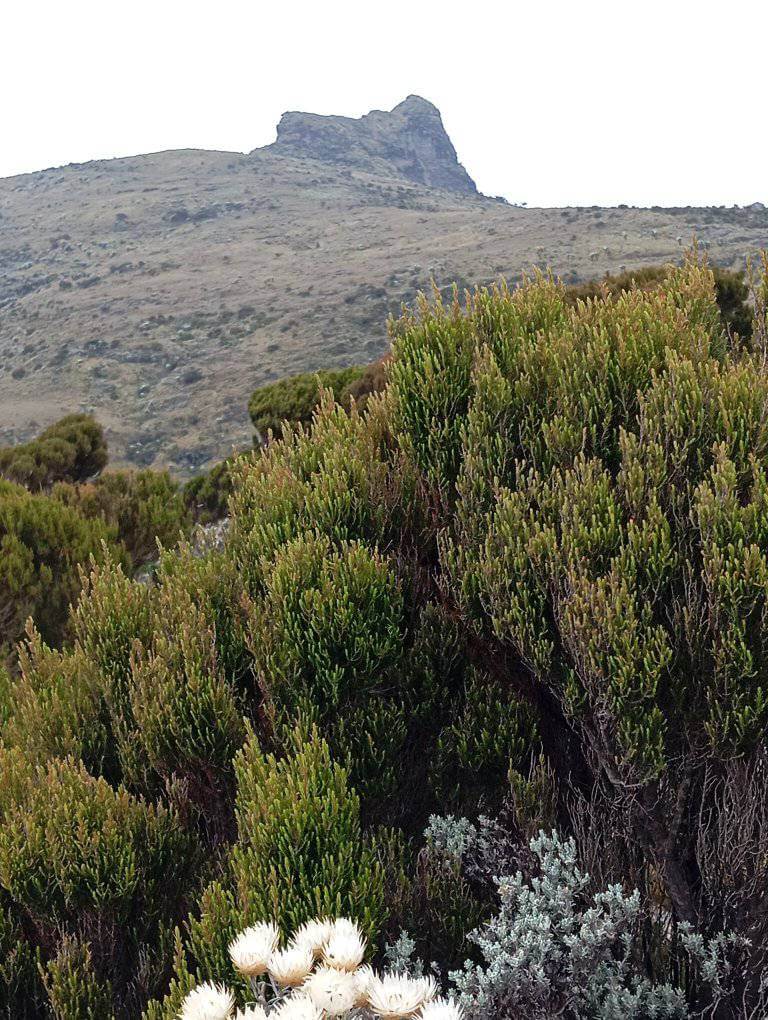
Here is a comprehensive guide to help you plan your climb to Mount Kinangop.
Mount Kinangop is located in the Aberdare National Park in central Kenya. The Aberdare Range is known for its dense forests, picturesque waterfalls, and diverse wildlife.
Climbing Kinangop provides an opportunity to experience the serene beauty of the highlands. The total Mount Kinangop climb/hike is 28 kilometers two way.
Climbing Routes and Highlights
- Starting Point: The primary route to Mount Kinangop begins at the North Kinangop Forest Station, Mutarkwa also know as the Mutarakwa Forest Trail. The other route is the infamous Elephant Hill route.
- Trail: The trail is well-marked and passes through tropical forests, bamboo zones, and open moorlands. As you climb, you will go through different vegetation zones, each offering unique scenery and wildlife sightings including buffaloes, Elephants , Elands among others. However, the animals density is low and the animals tend to keep of the trail during the day. Enroute you may also get an opportunity to see an aicraft (Flysax) that crashed on this mountain due to bad weather which a true testament of what this altitude can do to vsibility.
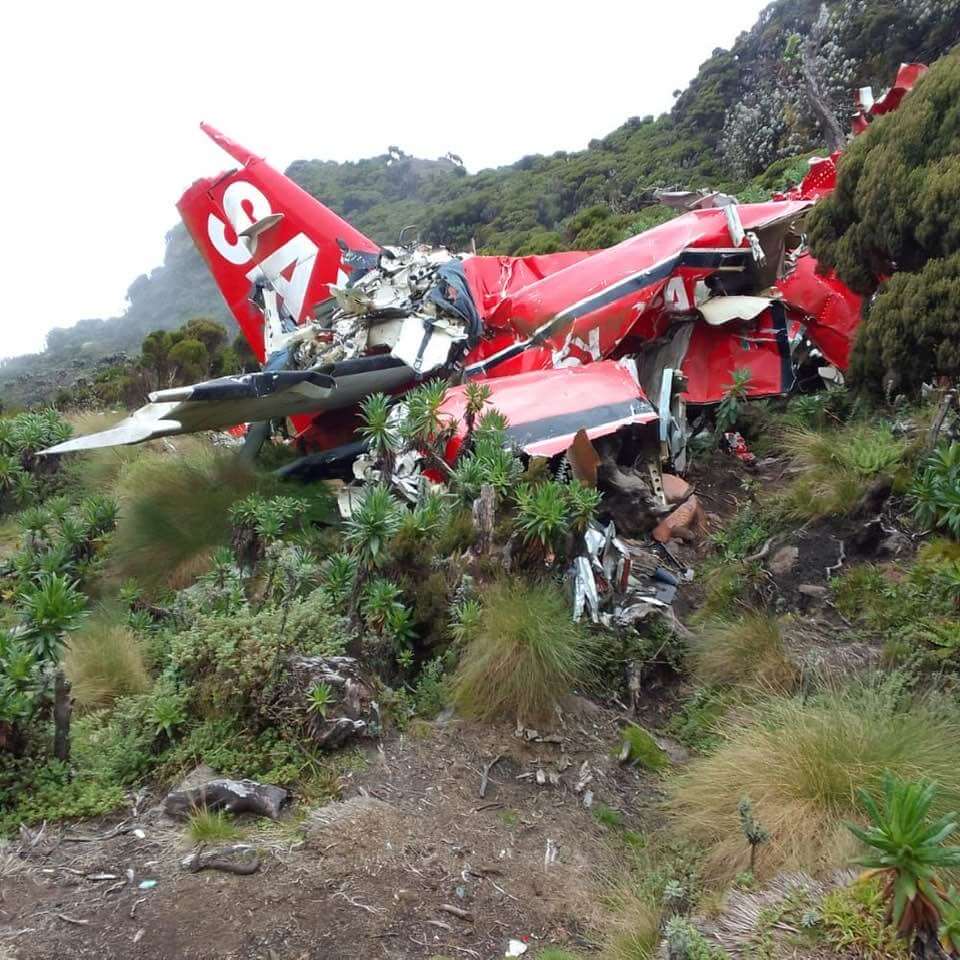
- Summit: The final ascent to the Mount Kinangop summit is not very easy as it involves a steep climb over rocky terrain. Those who manage to go to the top are rewarded with breathtaking views of the Aberdare Range, the Great Rift Valley, and even Mount Kenya on clear days.
Cultural Significance
The Aberdare Range holds cultural importance for the Kikuyu people, who consider it part of their traditional homeland. Exploring this area provides a deeper connection to the local culture and traditions.
Mount Kinangop offers some of the best mountain climbing in Kenya.
Best Time to Climb Mount Kinangop
The best time to climb Mount Kinangop is during the dry seasons, from January to March and July to October. During these periods, the weather is more predictable (drier) and there is less rain, and the trails are less muddy, making the climb more enjoyable.
Entry Fees and Guides
Climbers need to pay entry fess to the Kenya Wildlife Service (KWS) at Mutarakwa Forest Station to access Aberdare National Park. Hiring a local guide is recommended for safety, navigation, and learn about the natural and cultural aspects of the area.
Gear and Preparation for Mount Kinangop Climb/Hike
- Footwear: Sturdy hiking boots with good ankle support
- Clothing: Layered clothing for low temperatures, waterproof jacket, and warm gear for higher altitudes
- Essentials: Backpack, water, snacks, sun protection (hat, sunglasses, sunscreen), first aid kit, and navigation tools (map, compass, GPS)
4. Mount Longonot: The Volcano with a View
Mount Longonot is one of the best places for a mountain climbing adventure in Kenya especially for those we are getting started with mountain climbing. Located in the Great Rift Valley, about 60 kilometers northwest of Nairobi, this dormant volcano stands at 2,776 meters (9,108 feet). Its name means “Mountain of Many Spurs” or “Steep Ridges” in Maasai. Here’s everything you need to know about climbing Mount Longonot.
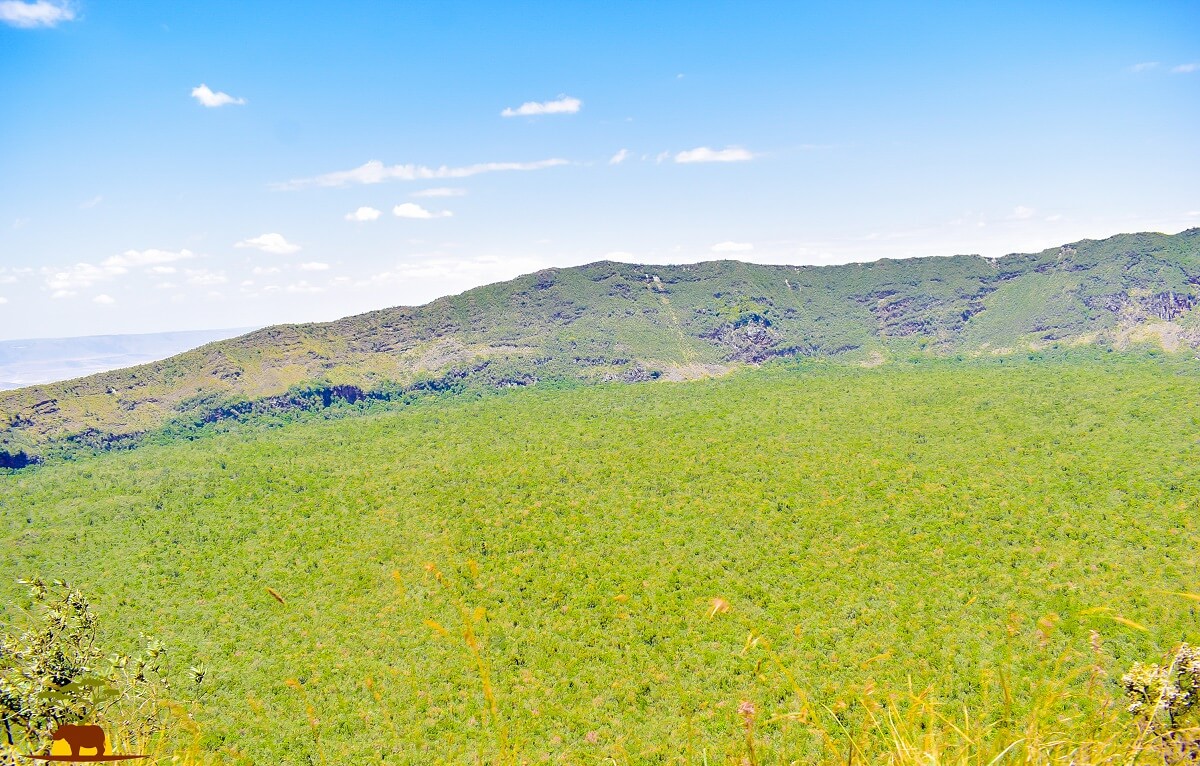
Mount Longonot is a perfect destination for a day hike. It has a big crater at the top, and you can walk around the rim for amazing views. The hike is challenging but very rewarding. You will see beautiful landscapes and even some wildlife along the way.
Climbing Route and Highlights
- Starting Point: The hike starts at the Mount Longonot National Park gate.
- Trail: The trail is well-marked and begins with a gentle slope through the forest. After about an hour, it gets steeper as you climb to the crater rim. This is 3.1 kilometres to the crater rim.
- Crater Rim: Once you reach the crater rim, you can choose to hike around the entire crater (7.5 kilometers), which takes about 2-3 hours. The path around the rim is rugged and requires careful footing, but the views are worth it.
- Summit: The highest point of the crater (Kilele Ngamia) offers stunning views of the Great Rift Valley, Lake Naivasha, and the surrounding landscapes.
Highlights
- Crater Walk: Walking around the crater rim is the highlight of the climb. You get to see the inside of the crater, which is covered in lush vegetation.
- Scenic Views: From the top, you can see far and wide, including Lake Naivasha and the vast plains of the Great Rift Valley.
- Wildlife: You might spot some animals like zebras, giraffes, and various birds during your hike.
Unique Features
The crater of Mount Longonot is one of its most impressive features. It is about 8 kilometers in diameter (similar to Mount Elgon) and offers a unique hiking experience. The views from the rim are breathtaking, making it a great spot for photography.
Mount Longonot is easily accessible from Nairobi, making it a popular destination for both locals and tourists. You can reach the park by road, and the hike can be completed in a day.
Best Time to Climb Mount Longonot
The best time to climb Mount Longonot is during the cooler seasons because it is located in a dry and host semi arid area. The best months are June to October. It can also be done between March and May but it is advised to avoid if heavy rains are in the forecast due to flash floods.
Permits and Fees
You need to pay an entry fee at the Mount Longonot National Park gate. The fees are used to maintain the park and ensure the safety of visitors. You can hike alone on this mountain but it is highly advised to join a hiking group for company and safety as some accidents have previously been reported at the crater.
You can join our monthly Mount Longonot Hike trip at Kifaru Discover Safaris where we have some of the best hike groups in Kenya.
Gear and Preparation for Mount Longonot Climb/Hike
- Footwear: Wear good hiking boots for good grip as the soil is usually soft and loose.
- Clothing: Dress in light clothes but carry a light jacket, as the weather can change quickly.
- Essentials: Bring plenty of water, snacks, a hat, sunglasses, and sunscreen.
Safety Tips for Mt Longonot
- Start early to avoid the midday heat.
- Stay on the marked trail.
- Carry enough water to stay hydrated.
- Be cautious around the crater rim as it can be steep and slippery and accidents can occur
5. Mount Elgon: The Old Volcano
Mount Elgon, straddling the border between Kenya and Uganda, is an ancient shield volcano offering an exceptional mountain climbing experience. This is the second highest mountain in Kenya but not a very common destination due to previous insecurity issues which have since improved.
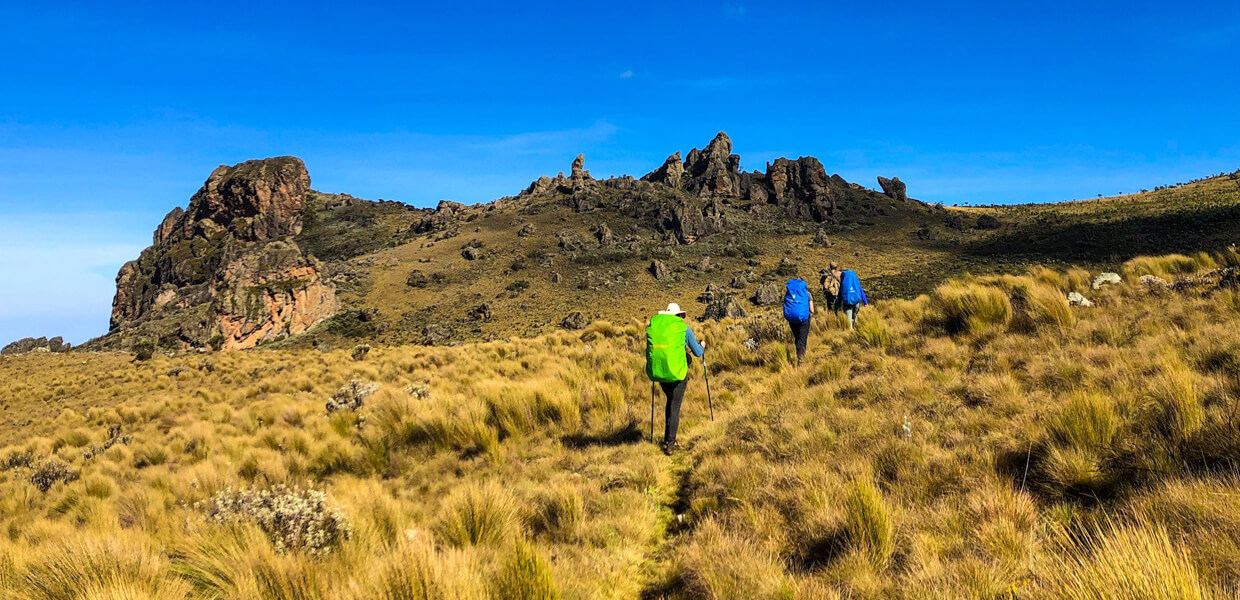
It is often overshadowed by Mount Kenya, Mount Elgon presents a unique blend of geological wonders, rich biodiversity, and cultural significance, making it a hidden gem for adventurers. Here is an analysis at what makes Mount Elgon a wonderful destination for mountain climbers in Kenya.
Mount Elgon stands at 4,321 meters (14,177 feet) with its highest peak, Wagagai, located in Uganda. The mountain boasts the largest volcanic base in the world, spanning approximately 80 kilometers (50 miles) in diameter.
The Kenyan side of the mountain features several notable peaks, such as Sudek, Koitobos, and the historically significant Kitum Cave.
Climbing Routes in Kenya and Highlights
Sudek Peak (4,302 meters)
- Route: The climb to Sudek Peak typically starts from the Kenyan side, offering a challenging but rewarding trek. The trail winds through dense forests, bamboo zones, and moorlands, providing a diverse range of ecosystems to explore.
- Highlights: Sudek Peak lies on the border between Kenya and Uganda, offering stunning panoramic views. The route to Sudek is less crowded than the Wagagai route, allowing for a more isolated climbing experience.
Koitobos Peak (4,222 meters)
- Route: Koitobos can be accessed via the Endebess Bluff route on the Kenyan side. The trail is relatively less steep, making it suitable for climbers of various skill levels.
- Highlights: The climb to Koitobos is known for its scenic beauty, passing through montane forests, giant groundsels, and open moorlands. The peak offers breathtaking views of the Great Rift Valley and the vast plains below.
Kitum Cave
- Route: Kitum Cave can be visited as part of the trek to the peaks or as a standalone destination. The cave is located on the lower slopes of Mount Elgon.
- Highlights: Kitum Cave is famous for its salt deposits, which attract elephants and other wildlife. Visitors can witness the unique spectacle of elephants venturing deep into the cave to mine for salt with their tusks.
Unique Features
Mount Elgon features one of the largest intact calderas in the world, measuring approximately 8 kilometers (5 miles) in diameter. The caldera is a central attraction, offering dramatic landscapes and diverse flora and fauna.
Cultural Significance
Mount Elgon holds cultural importance for the local communities, including the Bukusu and Maasai tribes. Traditional rituals and folklore are associated with the mountain, adding a cultural dimension to the climbing experience.
Initially the Maasai were staying inside the Kitum caves in the park before it was gazetted.
Best Time to Climb Mt Elgon
The best time to climb Mount Elgon is during the dry seasons, which are from June to August and December to March. During these periods, the weather is more predictable, and the trails are less muddy and slippery.
Gear and Preparation
- Footwear: High quality hiking boots with good ankle support
- Clothing: Warm clothing for varying temperatures, waterproof jacket, and warm gear for higher altitudes
- Essentials: Backpack, water, snacks, sun protection (hat, sunglasses, sunscreen), first aid kit, and navigation tools (map, compass, GPS)
Safety Tips
- Acclimatize properly to avoid altitude sickness.
- Stay hydrated and carry enough water.
- Be prepared for sudden weather changes
Final Thoughts
Kenya’s mountains offer something for everyone, from tough climbs to easy hikes with beautiful views. Whether you are climbing Mount Kenya or exploring Mount Longonot, you will have an adventure you will never forget. Prepare well, respect nature, and enjoy the amazing beauty of Kenya’s mountains.
Happy climbing! I hope so!
